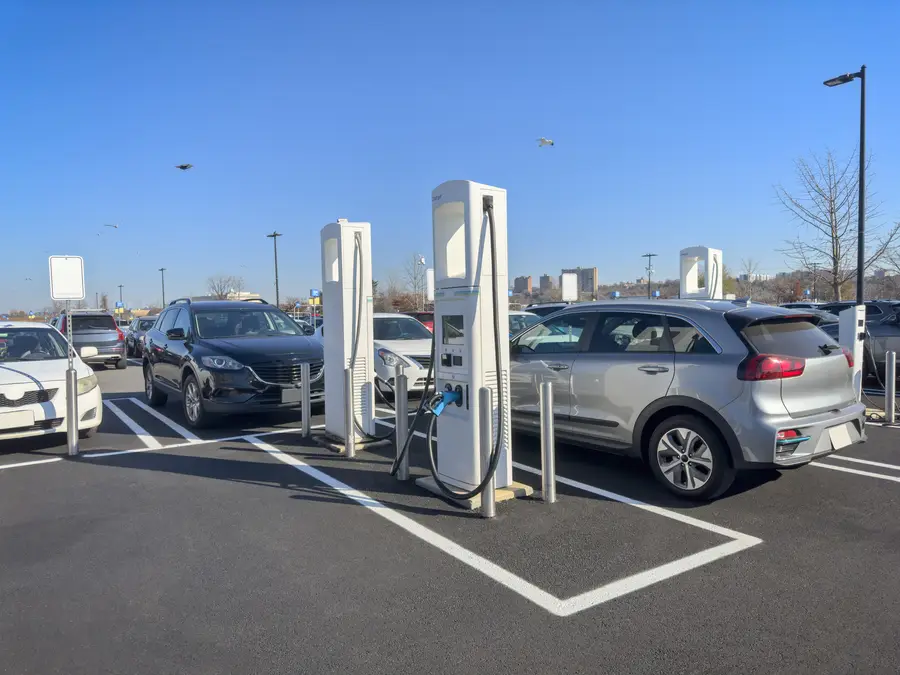Insights
Transportation Electrification: What's the Cost?

Across the country, transportation is being electrified. For example, the Inflation Reduction Act included tax credits for the purchase of electric vehicles, and the Bipartisan Infrastructure Law contained grants for the construction of electric vehicle charging stations for personal and fleet vehicles. Before these, in 2020, California adopted the Advanced Clean Truck (ACT) Act; today, at least six other states have followed suit. This rule was designed to reduce carbon emissions by requiring the shift from gas-powered trucks to electric trucks by setting a cap on the number of medium- and heavy-duty vehicles that burn fossil fuels sold each year. These policies were enacted with the goal of reducing state- and nation-wide fossil fuel emissions from the transportation sector, which is the largest source of greenhouse gas (GHG) emissions in the United States.
We will breakdown the benefits of these types of policies in greater detail, but as a quick synopsis potential impacts include:
- Gas powered vehicles, especially diesel trucks, release harmful particulate matter that disproportionately affects communities located near major roadways—often low-income, minority communities. Replacing these with electric vehicles could lead to better health outcomes in communities.
- More electric vehicles on the road would mean more electricity is needed so utilities need to be ready to respond and we must keep a close watch on how to respond in an environmentally conscious manner.
The Future Electricity & Transportation Outlook in North Carolina
To quantify the impacts of these policies on the North Carolina electricity sector, RTI ran an analysis using RTI’s Accessible Lightweight Power Sector Simulation (ALPSS) model. ALPSS is a linear optimization model that simulates operation of the US electricity sector. By assuming that utilities operate to minimize costs, the model can make predictions as to what kind of generators (wind, solar, coal, etc.) will be operated to satisfy future demand for electricity, what kind of generators will be built (and where), and what emissions of carbon dioxide and other harmful pollutants will be created in the process.
How ALPSS Helps Quantify the Impact of Transportation Electrification
Based on the ALPSS analysis, RTI found that in North Carolina the increases to power sector emissions are much smaller than the reduction to transportation sector emissions, so the electrification of medium- and heavy-duty vehicles still leads to a net reduction of GHGs. But just like there are communities being harmed by emissions of particulate matter from roadways, there are communities being harmed by existing emissions of particulate matter from power plants, so the effect of increased vehicle electrification on those specific communities is less clear.
According to RTI’s analysis, this effect depends heavily on how electric utilities may respond to policies like North Carolina’s net-zero law (HB 951)—over the coming decade. In 2022, Duke Energy, North Carolina’s primary utility company, laid out a plan to comply with recent regulations by building out new solar and wind generators and battery storage. The plan also relies heavily on natural gas generation in the near- and long-term.
An alternate plan proposed by the North Carolina Sustainable Energy Association (NCSEA) showed that it was possible to meet future demand for electricity while skipping the construction of new natural gas generators and slowly retiring the existing ones.
According to external modeling studies, both plans are expected to be able to reach zero carbon emissions by 2050, as required by law; however, RTI’s research found that the NCSEA plan that builds out more renewable generators will emit less localized pollution than Duke Energy’s plan in each year between now and 2050.
The Role of Renewables in Meeting Increased Electricity Demand
RTI also tested how each plan might respond to increases to electricity demand such as those that might arise from accelerating the transition from diesel trucks to electric trucks. For the Duke Energy plan to accommodate that additional electricity demand, it requires that more energy be produced by the natural gas plants it builds. The alternative plan can meet the same requirements without resorting to burning more fossil fuels; in other words, an electricity sector dominated by renewables can better respond to the increased electricity demand without emitting any incremental pollution. Our data show that it’s possible to electrify the transportation sector without causing adverse harm to communities located near fossil fuel power plants—a win-win outcome.
Data-Driven Decision Making for Transportation Electrification
RTI’s research shows that careful planning can lead to the design of an electricity sector that is flexible enough to respond to changes in electricity demand without emitting incremental pollution that will harm surrounding communities.
Check out the full report for more detail on how both aspects of the proposed ACT policy can affect local and state-wide emissions in North Carolina. You can also explore past energy plans here.
The RTI ALPSS model is free to use and publicly available online. Visit the website and contact rti-alpss@rti.org to request an account.
Disclaimer: This piece was written by Candise Henry (Senior Energy Specialist) and Shane Weisberg (Environmental Data Scientist) to share perspectives on a topic of interest. Expression of opinions within are those of the author or authors.


